Identity and the New Nationalism.
Where is it going in Eastern Europe?
I
During the refugee crisis in 2015, it was clear that a huge difference existed in the immigration policies of Western and Eastern Europe states. While the countries of Western Europe received tens of thousands of refugees of all color and religion, the governments of Eastern Europe completely refused to receive any. The few that they did receive were only accepted with great reluctance and under enormous pressure from the bureaucrats of the European Union.
But under this refugee problem lies another, much deeper and more complex question: the idea of being part of a nation, contrasted with the idea that nations should not be sovereign but dissolve into a a globalized world.
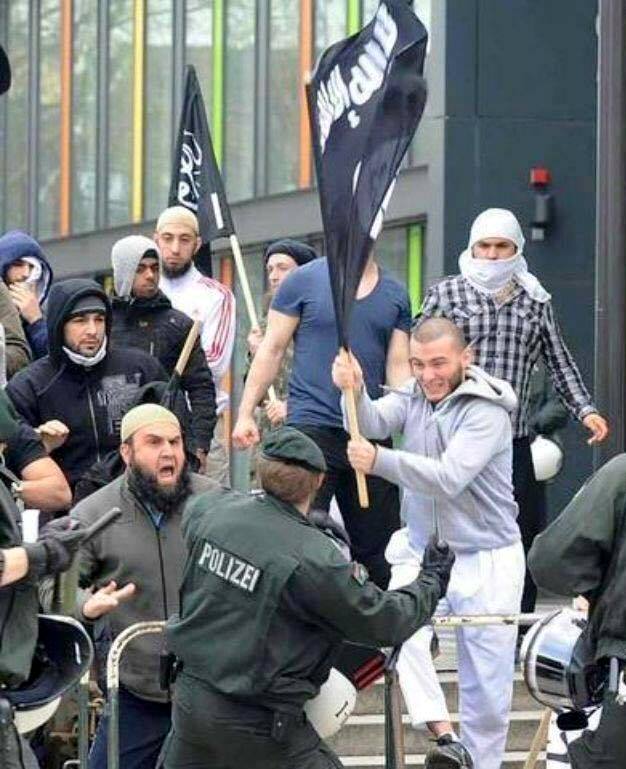
A “refugee” waves the ISIS flag during a flashmob affray in Austria.
From this point of view there is a huge difference between the political culture of Western and Eastern Europe. In Western Europe there are a number of large nations with populations numbering in the tens of millions; throughout history a balance has been achieved between them, as it is difficult to imagine that one of them could wholly absorb another of the existing great nations. The smaller nations served as a point of equilibrium, and every time a large nation attempted to annex a minor one, or a strategic region of neighbouring large nation, war would naturally ensue. For example, the political, economic and military power of Germany, France, and England historically balanced each other by providing a check on each other’s extraterritorial ambitions. If Germany were to consider annexing, say Denmark, the others could not accept the move as it would disrupt the system of checks and balances between the larger Western European states; in other words, a certain status quo was maintained because major moves on part of the larger states would violate the idea of equilibrium with potentially horrific consequences. This was the way in which the First World War unfolded.
But in Central and Eastern Europe the story is somewhat different. The only nation with a large population is Poland, while the others are considerably smaller. Unfortunately, they have as neighbours two huge nations, Russia and Turkey, both of whom have historically proven themselves to be expansionist and imperial, wanting to annex and eliminate or at least “Finlandise” the small nations on their so-called “borderland”.
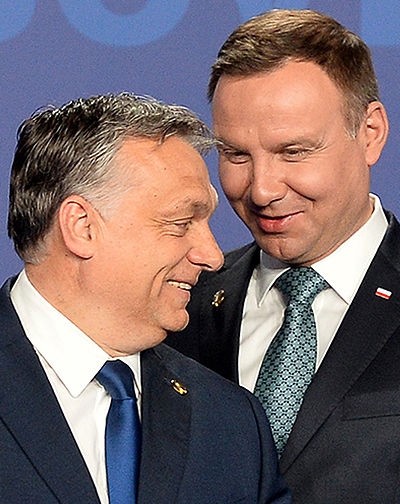
Hungary’s President Victor Orbán and Poland’s President Andrzej Duda.
An argument could be made that this is perhaps the reason why Eastern European nationalism is much more alive and acceptable to mainstream sensibilities – because the idea that we can disappear as nation states is much more present in the public consciousness. In Western Europe people thought they might lose their balance, or at most have their status of being a leading nation threatened; in the past, a Frenchman or an Englishman never thought his whole country would literally be submerged into another state or that he could disappear as a people.
This fundamental idea, which lasted for centuries, has significantly changed with the political and cultural reforms pursued under the banner of integration within the European Union. Now the threat is no longer an invasion and destruction of national characteristics by force of arms. It is about convincing people to voluntarily give up their characteristics for the dream of a future world without frontiers, where the egalitarian myth in theory would make us happy.
In practice this brings multiculturalism, opening borders (or in more practical terms: not controlling them, which more or less results in the same) and a desire of individuals to dilute themselves into the mass of the globalized population.
What is the reaction to this problem on either side of the European continent?
II
First it must be made clear that all nations can be compartmentalized into 3 organic segments of their constituent populations. First a “hard core”, i.e. those people who want to be, say, Hungarian and only Hungarian. Then there is a larger group, a huge “protoplasm”, people who are Hungarian, like to be Hungarian, but are unlikely to fight to defend the national characteristics. And finally we have a kind of “edge in erosion”, people for whom being Hungarian is something that does not matter, and they change country or nationality without the slightest problem. We can observe that statistically the “hard core” and “erosion edge” are always minority elements of the population, and the “protoplasm” is always the majority or the overwhelming bulk of the whole.
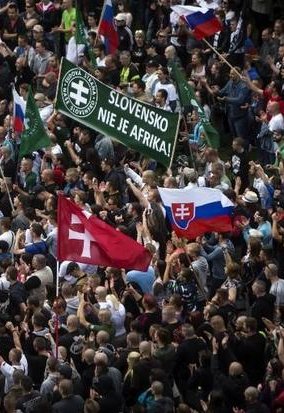
“Slovakia is not Africa” – Patriotic rally in Bratislava.
The ratio between these three segments was what most differentiated one Europe from another.
We can see this by analyzing numerous “Eurobarometer” surveys over the years. Data shows that in Eastern Europe the “hard core” and “erosion edge” were always greater. That is, they had more “nationalists” and more people willing to dilute or change their nationality. In Western Europe protoplasm was always bigger, a general idea that countries were always going to exist, and that new immigrants would somehow be diluted in the mass of the population, so it was not worth the trouble to wage war to defend national characteristics.
However, the massive wave of immigration of the last several years has catalyzed a significant shift. While the European Union meant to balance and equalize the countries of Europe, the majority of the population was left to follow the historical trend and continued to reflect the old dynamic which existed between the peoples of the larger Western European states. After all, so they thought, France, Germany, England would always remain the same, perhaps not so clearly, but in essence surely they would be maintained. It was simply inconceivable that what was taken for granted would the thrown so quickly and so brutally into question.
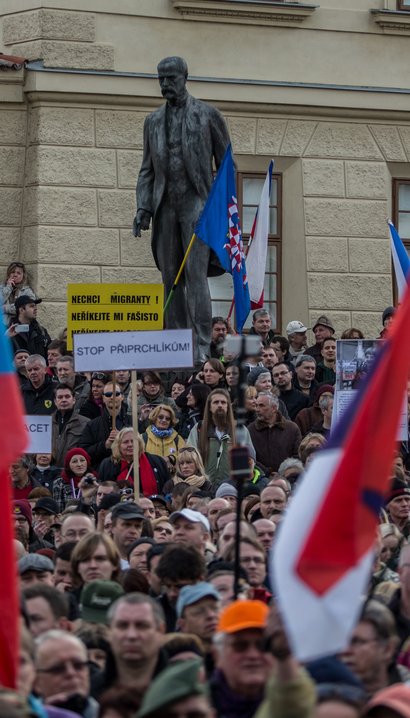
“Stop the deluge of immigrants” – Patriots march in Prague.
The avalanche of immigrants, which mainly came from the Middle East and North Africa, put the two sides of Europe under similar conditions for the first time. Now many Western Europeans realize that they too can disappear, be swallowed up by a majority of strangers who do not adapt to their countries of arrival, and who change their living conditions.
It is no longer the foreigners who are diluted in the European mass, it is the Europeans who are diluted in the mass of immigrants.
The danger posed by Russia and Turkey for Central and Eastern Europe, so to speak, is now functionally represented by the effect of mass migration of largely unassimilable immigrants into Western Europe. This is because the political and cultural impact on the host populations is analogous in both cases. As a consequence, the “protoplasm” of the populations of the West and East are beginning to react in similar fashion. Of this, Brexit is the first but not the last symptom. On the other hand, sectors of the population that are less identified with national characteristics, such as anarchists, sexual minorities, left intellectuals, etc., are in turn radicalized: as the crisis deepens, their demands grow ever more uncompromising and extreme.
Eastern Europe did not receive, because it flatly refused, this avalanche of immigrants. And thanks to their victorious steadfastness, they realized for the first time that they can resist, if united among themselves, the pressures of the increasingly despotic European Union. In light of recent history, this is certainly an impressive example of a collective change in attitude and the individual national benefit of local national solidarity.
III
It should also be born in mind that the older generation of people in Eastern European countries, say people today between 30 and 50 years, had a certain complex compared to their counterparts in Western Europe. The complex convinced them that they were the “poor”, the “backward”, the ones who had to bow their heads in front of Brussels if they wanted to get ahead. Young people today, those between 20 and 30, do not have this attitude anymore in Central and Eastern Europe. When it comes to this kind of social pathology, the difference between the two Europes is no longer so stark. This inferiority complex is no so pronounced among the next generation of Central and Eastern Europeans. Today, they feel just like an athlete who may have started the race late, but with diligence, commitment and time, is going to equal the others. Likewise, there is a growing feeling that the European Union is not as necessary as it used to be.
The concrete result of this is that the “hard core”, Central and Eastern European nationalists now feel more entitled to affirm their collective and individual personality, to refuse to abandon national characteristics to be diluted in the “future world without frontiers, where the egalitarian myth In theory it would make us happy.” In light of the disaster that we have witnessed in Western Europe, this nationalistic pivot is not as unattractive as it may have been in the distant past. And as a consequence, parts of the “protoplasm” have begun to gravitate towards the nationalist pole.
In the last two or three years there has been a change of proportion between the 3 population segments, in favor of the “hard core” and this will likely reflect the outcome of the mainstream elections that will sweep the European continent in 2017.
I write this article in Riga, capital of Latvia. The symptoms of a resurgent Latvian nationalism are visible to all. It is not a nationalism that shouts and strikes, but a nationalism that is slowly affirming and conquering cultural terrain. For example, people wearing the national colors on the jacket, the wallet, the hat, are becoming more visible in public. Now in the winter it is fashionable among women to wear scarves with typical national designs of knitting. There are more people going to see the military parades. Likewise, the support of the population for the army continues to increase, and those that are inscribed in the reserves of the army have increased in recent years. A similar phenomenon can be observed in Poland. It is fashionable for young people to wear patriotic shirts, with the symbol of anti-Nazi resistance or with the Polish eagle. More and more young people are interested in “paramilitary” gun clubs, where they learn to handle firearms and shoot. In official and government ceremonies, one can see a growing proliferation of the Polish flag, and a conspicuous decrease in the number of European Union flags in sight.
Does this mean that the enemy is defeated and the countries safe? No, it only means that the nationalist “hard core”, which seemed to be losing ground only a few years ago, has rebounded and begun to grow again. The question of course is, how far will it grow? The answer, as is always the case, depends on several factors. Among them is the situation in Ukraine, and specifically, whether it will worsen or not. If Russia is increasingly seen as a dangerous aggressor, the nationalistic sentiment of the Central Europe will certainly continue to rise. But above all the current trend depends on having a unanimity in the definition of being a nationalist.
IV
And here I will pause to demur on an important point: one must be careful, because today’s “nationalism” in Eastern Europe is not that of the nineteenth or that of the twentieth centuries; it is not a question of obtaining the political independence of a country or of rejecting a military invasion. Instead, it is a confused nationalism that is divided between several currents of political thought, each defined by the history of each particular nation.
Consider the “Eurobarometer” survey, which asked interviewees about their national feeling. There is never any clear unanimity about what it means to be a member of this or that country among the answers provided. Take for example the Special Eurobarometer 346 of December 2014.1 They are asked “what are the most important characteristics of being a member of their country?” Is it to be born in the country? Merely feeling to be a member of it? To speak the national language? To share national traditions? Or perhaps being educated in the country? The answers vary widely, but when there is more unanimity they reach only two-thirds of the nation. For example, 69% of Portuguese think that an important characteristic of being Portuguese is to have been born in Portugal. 63% of Hungarians think that the most important thing is to feel Hungarian. 66% of Estonians think it is speaking the national language. 49% of Danes believe it is sharing national traditions and 46% of Finns think it is having been educated in Finland.
What is the reader to think of all this? Naturally we wonder whether this confused nationalism has a future. However, we must realize that apparent confusions can be explained by specific historical and cultural experiences: an outsider may find the above examples inconsistent, paradoxical or unintelligible, but this does not mean that these metrics of nationalism are meaningless or incoherent. For example, a small country whose language underwent a specific programme of targeted eradication (when it was part of a larger and culturally alien empire) may consider linguistic proficiency among its citizens to be as important as another country’s insistence that generational birthright is at the centre of national identity.
Another concrete example is Ukrainian nationalism, which has changed a lot since the beginning of the recent war in its eastern and southern provinces. Before, national identity was more defined by and directed against Poland; now it is anti-Russian. Before it was more theoretical, now has a concrete cause around which to rally.
V
The main problem of nationalism, both in Eastern Europe and Western Europe, is that it lost the idea of a “national mission”. In the Middle Ages, this mission took on a religious character. Each country had a precise idea of its place in the universe of Christian nations. Thus, for example, Portugal viewed that its mission was to bring Christianity to remote lands. Every Portuguese knew that doing this or that work contributed to a common goal. For the Poles or Croats it was very clear that their goal was to be the wall of Christianity against the advance of Turks, Russians, Tatars or any other anti-Catholic country. This sense of purpose reflected on the identity of the individual of each of these countries as well. A baker, for example, knew that he fed the people who defended the city walls, and was therefore personally invested with a common purpose and common ideal that was at the same time theological (civilisational) and civic (proto-national). This gave people a sense of belonging to something that was larger and beyond their individual lived experience, while enriching that experience with the wealth of common identity. This of course was the case in both victory and defeat, because nothing unites more than celebration or suffering in common. This national base had a religious cement that preserved the union; it constituted a divinely inspired civilisational mission that each country sought to fulfill.
Today in contrast, what we see in the religious field is an incredible confusion. Throughout Eastern Europe pagan traditions are being reborn, and rites and superstitions that had disappeared centuries ago are beginning to appear here and there. Celebrations of the winter or summer solstice, weddings next to trees of good luck, esoteric “baptisms” in the middle of the forest at night and other kind of credulities are becoming increasingly popular. While some may believe that this represents a positive attempt to reconnect with a past tradition, these beliefs are unlikely to unite a civilisation the way Europe was united under a common banner of “Christendom”. On the contrary, atavistic throwbacks to a past that no longer serve the needs of the present will more likely be a cause of division, fostering a type of nationalism that has pitted one European nation against another. What cannot be ignored however is that the people who frequent these pagan ceremonies want to feel like members of something special, a tribe, a clan, an extended family. If anyone offers them that feeling of being part of something alive they would abandon those superstitions in minutes. Ironically, the popularity of neopagan ways towards identity may therefore be a function not of the validity of the pagan worldview, but the failure of a left dominated Christian establishment that no longer provides the national mission it once did.
VI
From the eighteenth century, the nationalist idea became more terrestrial, in the sense that belonging to a country was to help it to enlarge territorially – to have more land, or to defend what it already had. Subsequently, in the nineteenth century a cultural component was added. The idea that being German, for example, was to maintain the German culture and help it to spread throughout the world. While preserving one’s culture and promoting it elsewhere is not reprehensible in any way, the decline of the transcendent element gave birth to a kind of saving mission devoid of the religious component; the resulting spiritual vacuum paved the way for an overcompensation where national pride degenerated into national chauvinism. After the terrors of the Second World War, a counter-overcompensation saw the superficial “unification” of cultures, or rather, the emergence of a single culture imposed by an ideology of formal egalitarianism promoted through a homogenizing mass media. The result we witness today is a mindless standardization: the same music everywhere, the same way of dressing, the same architecture, fast food, etc. With this the national idea was reduced to a kind of archeology, something that only lives in the past. This created an emotional and psychological trauma that has caused a serious disruption to the sense of identity many in Europe feel today – and this is true for men of the West as well as the East.
Many nationalists say: “I want to be Polish” (or Hungarian, or Bulgarian, etc.). But what does it mean to be Polish nowadays? Is it to speak Polish? Immigrants, especially the Vietnamese in Warsaw, also learn the language. Is it being Catholic? There are Catholic Arabs living in the region today. Is it being Slavic? DNA studies show us that there is no homogenous European country. In all, several races are mixed, to a greater or lesser extent.2 The most homogenous country in Europe is Finland, and only 61% of the population share the same DNA. Wales reaches 74% homogeneity, but what about the remaining 26%? Poland itself has only 57% of Slavic DNA. Is a Pole merely someone who lives in Poland? Yet there are foreigners in Poland, many of whom have arrived recently with the intention to stay permanently. But many others have been residing there since the days of the multicultural Polish Lithuanian Commonwealth. Likewise, there are millions of Poles living abroad. Are they not part of the Polish national family?
So how to define a Central or Eastern European “nationalist” in the present day? Even if they closed the borders of the country, universal culture would come from all sides and the very essence of the country would be diluted. Is the answer a return to an idealized past? Ultimately, today a European nationalist can be defined as a person who opposes something. He opposes losing his language, opposes the mass influx of unassimilable immigrants, opposes foreign interference (for the West, this may be American cultural banality; for the East, likewise, but also opposition to Russian political irridentism), opposes the arrogance of the European Union, and opposes global culture, and so on. Is this enough to save the countries of Europe? I do not think so. It is not enough to be against, the successful nationalist of whom I write will have to affirm something.
My view is that European nationalism – and in particular the nationalism of Central and Eastern Europe – will only win in this battle if it knows how to present an idea of a national mission to fulfill.
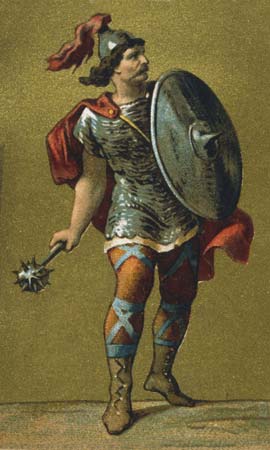
Charles Martel.
If we again have a common ideal, a joint desire to do something. It is not only the ethnic family, it is not only the language spoken, it is not only being born or educated here or there that provide us with an enduring identity and lead us forward. To all these factors we must add the meaning of a mission.
Thus, we need a spiritual reawakening and reaffirm a religious mission back in our public life; something superior to us and for which we are ready to defend and fight for. This does not necessarily have involve waging actual warfare in the traditional sense; it may simply be an ideological expansion, a desire for religiously based artistic or cultural revival, or an apostolic mission – things that are, incidentally, far more profound and lasting than the effects of physical warefare.
Some might object that these types of religious missions are international by definition, as were the crusades, or as are the religious orders, where missionaries from different countries share the same ideal. A religious mission can indeed be national or international, but the manner in which these are constituted and function depend on the circumstances of each case. Spain and Portugal built their national empires based on a religious mission to evangelize the new world. Poland and Croatia survived as a nation for a religious mission to protect Christianity in the east. France for centuries showed the superiority of the Christian Culture, creating a national culture of an undeniable elegance.
None of these countries lost their sense of individual national integrity while participating in the grand project of European civilization.
VII
One weighing factor in favor of this proposal of offering a religious mission today is that there are a huge number of people with nationalist tendencies whose actions suggest that they may be suseptible to transcendent ideals. They do not trust the political world or expect it to provide answers to present decay. They do not want to “attack” anyone. They just want something that gives them security and a sense of belonging to their country. Unlike the homogenising and culturally leveling ideologies of the left, these new nationalists are genuinely curious about new ideas and are exploring way to rejuvenate their national community.
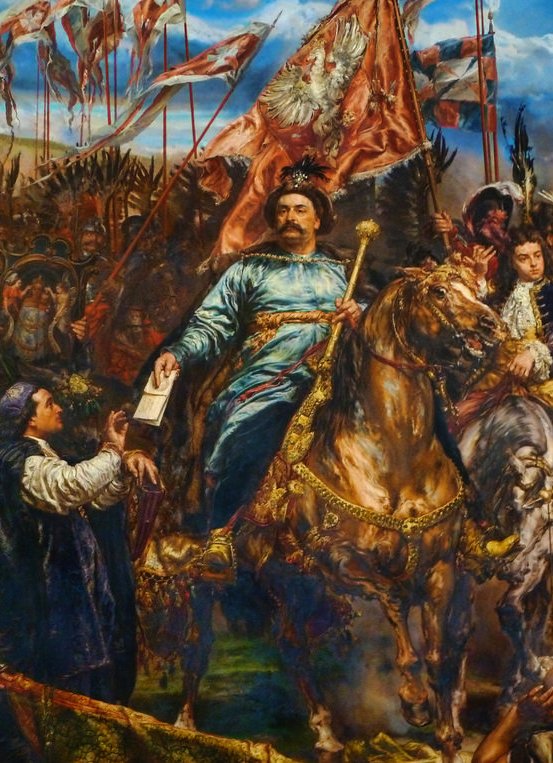
Jan Sobieski III
Will the “hard core” members accomplish their national goals in Europe? It is far too early to make a prediction, but so far very few nationalist groupings seem to have considered the solution suggested here, at least in the West. Indeed, many nationalistic factions in Western Europe may seem reactionary but are merely a militant form of defending the secular liberalism that has brought Europe to its present mess.
In any event, if those who want to save their country from dissolution and globalization do not act quickly, they are sure to be lost. Judging by the speed at which the destruction of national cultures advances, there is not much time left to save what remains. Having a vision is important, and being historically aware is vital, but mythologising and living in a dream world is the life of disconnected people. Those who love something and are serious about protecting and promoting it are willing to fight in the real world and assume the risk that this struggle will surely involve.
It remains to be seen whether the new nationalists be able to give their countries a sense of mission again. The solutions will however involve dealing with the situation as it is, not as we want it to be, and using the tools at our disposal. We will therefore have to be realistic while also being able to think flexibly and take whatever opportunities may offer us. If the new nationalism is to be a positive force of cultural renewal, it will have to take the constructive form of affirming a vision of a Europe of nations that are sovereign while cooperating within the framework of a common civilisation at the same time. What we need is the creation of a new balance, and one that is informed by the old – but by no means redundant – traditions of a nationally affirming Christendom.
– Valdis Grinsteins is an international activist working with the Tradition Family Property organisation founded by Plinio Corrêa de Oliveira. While Valdis is predominantly based in Central Northern Europe and South America, on those occasions he has visited Australia he has had a close working relationship with the Sydney Traditionalist Forum and local reactionaries in the Sydney region. His contribution to last year’s Symposium (“transcendence: community, nation, civilisation; religious aspects of the present turmoil”) was titled “The Failure of Utopian Europe”.
Endnotes:
- Special Eurobarometer 346: New Europeans, European Union Open Data Portal [ID: S876_73_3_EBS346] (8 December 2014) (accessed 29 January 2017).
- “Distribution of European Y Chromosome DNA (Y-DNA) Haplogroups by Country in Percentage” Eupedia (online) (Updated: February 2016) (accessed 29 January 2017).
Citation Style:
This article is to be cited according to the following convention:
Valdis Grinsteins, “Identity and the New Nationalism: Where is it going in Eastern Europe?” SydneyTrads – Weblog of the Sydney Traditionalist Forum (11 February 2017) <sydneytrads.com/2017/02/11/2017-symposium-valdis-grinsteins/> (accessed [date]).
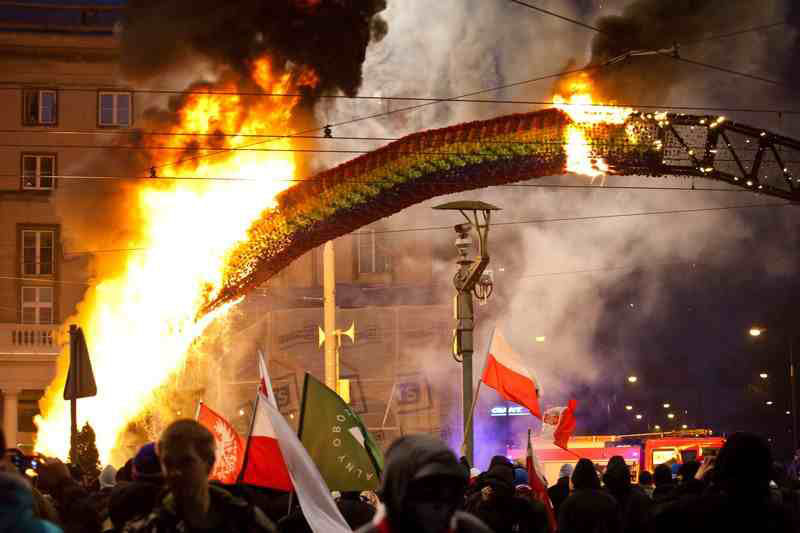
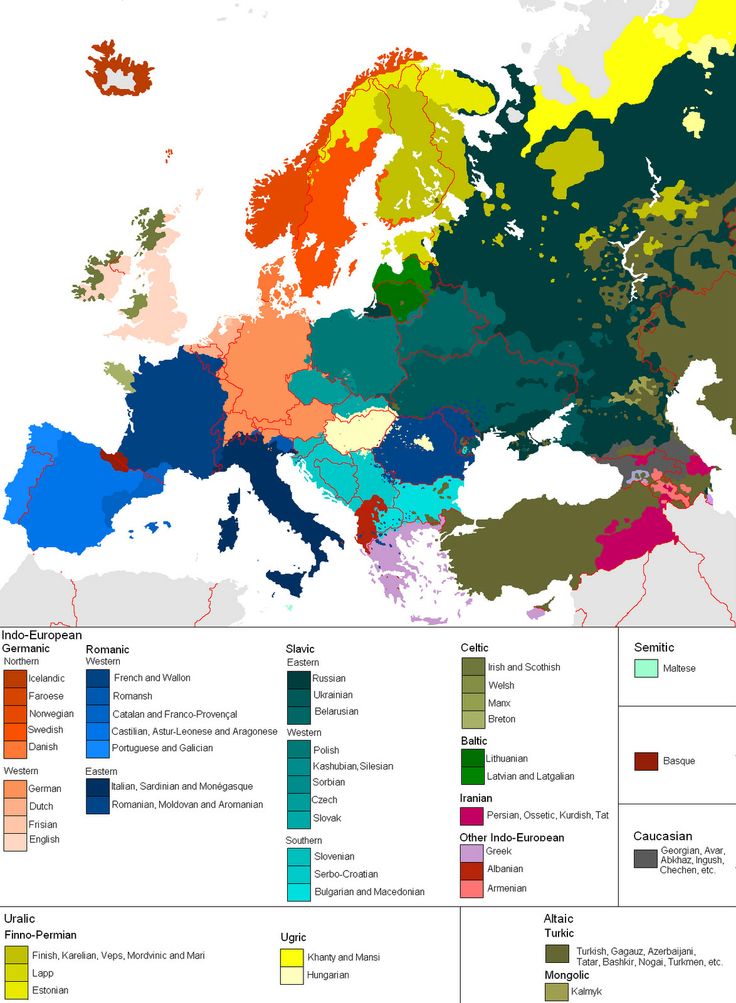
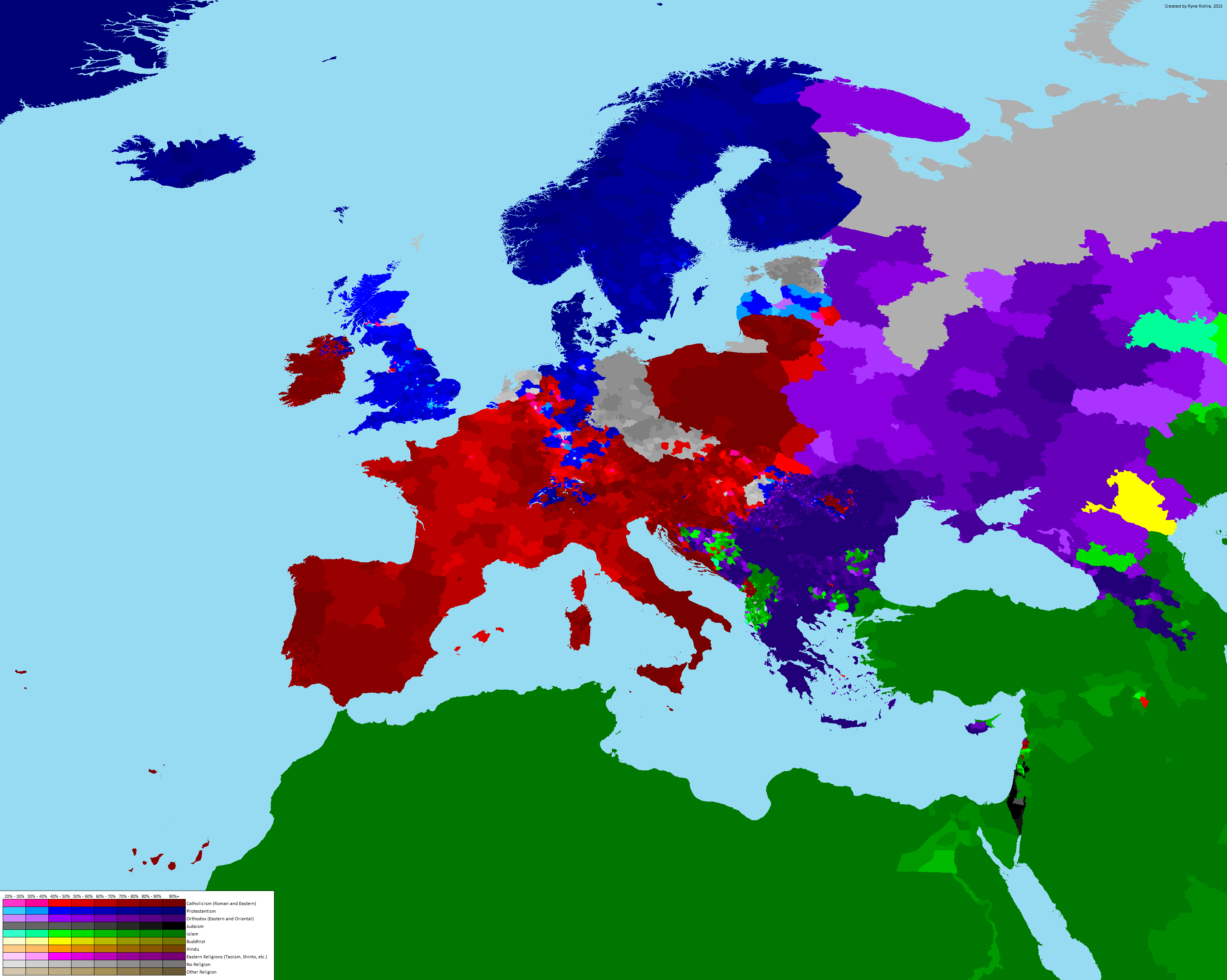
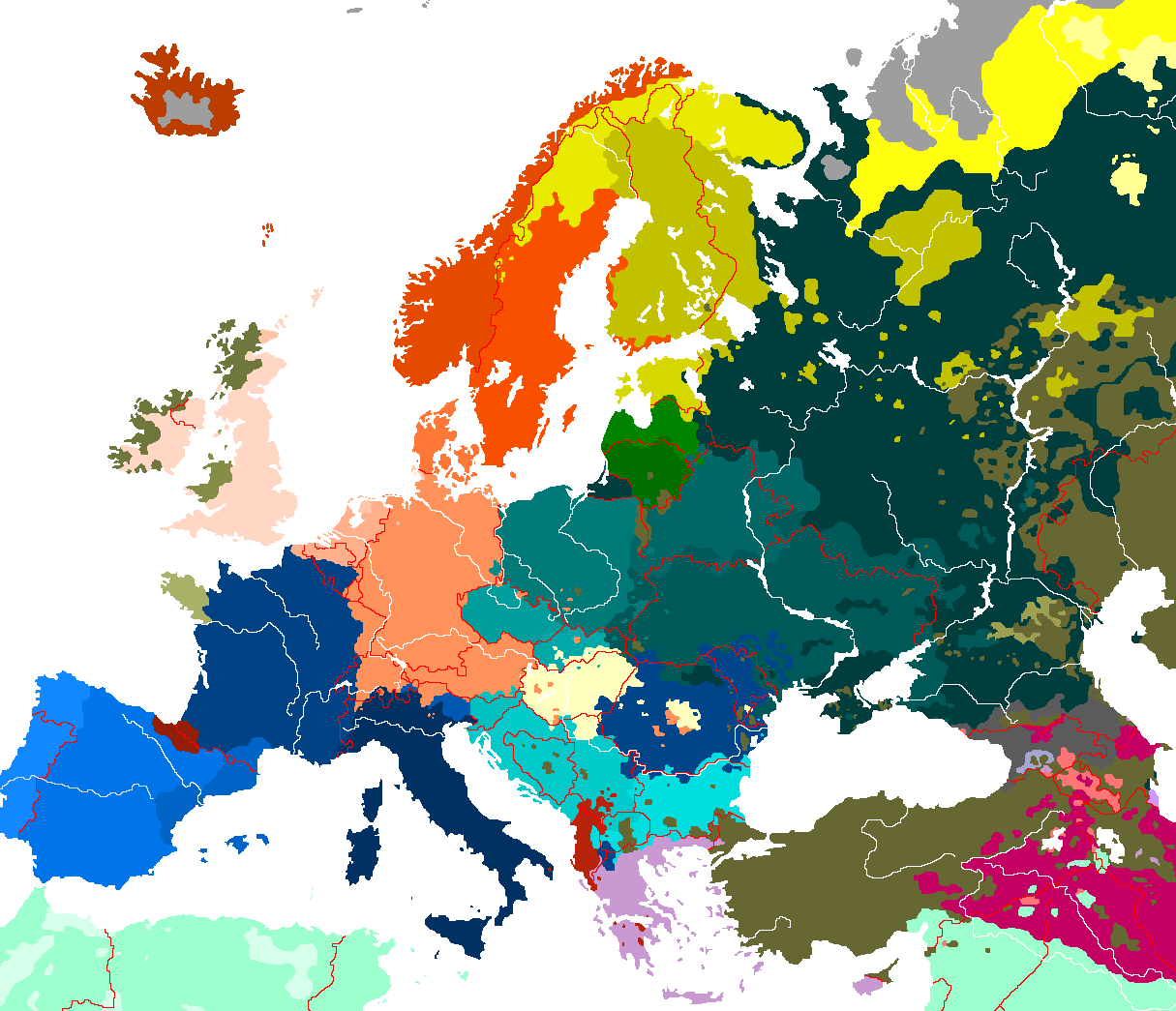
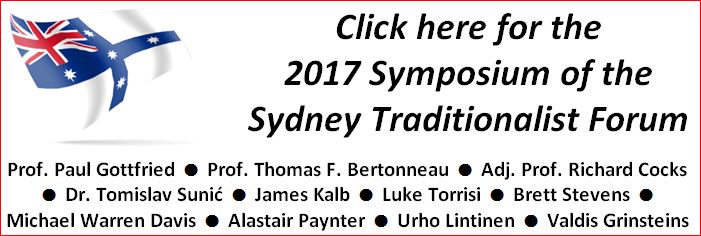
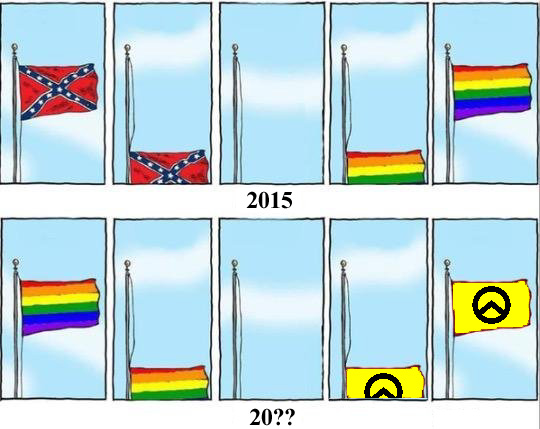
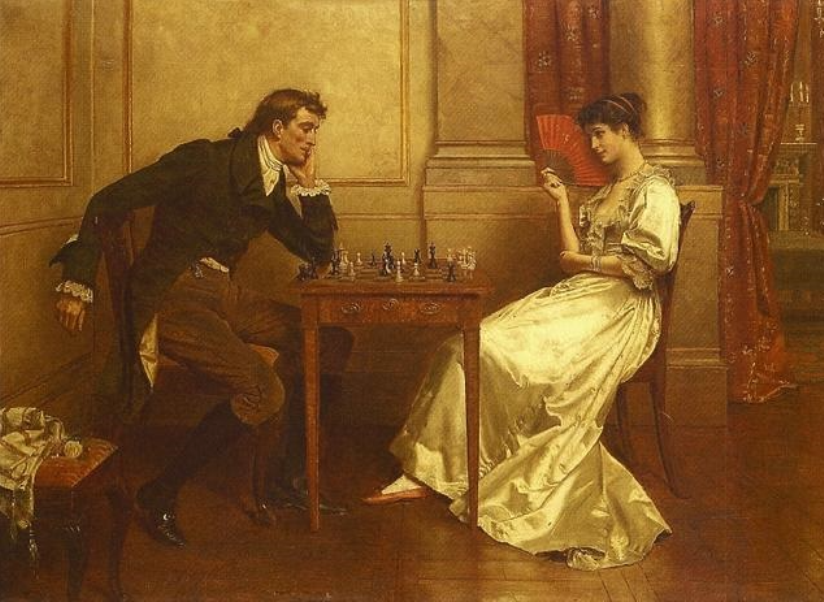
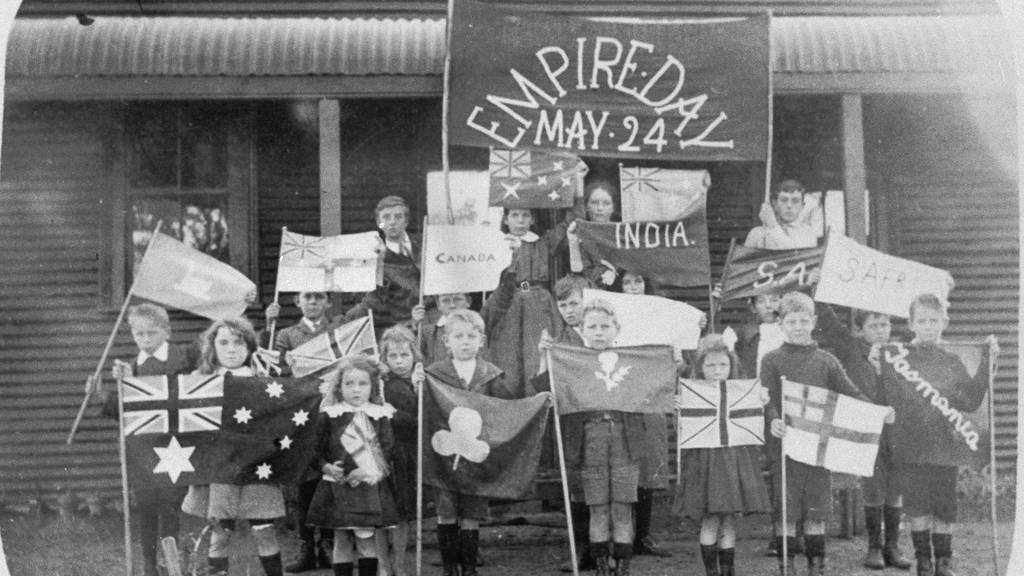
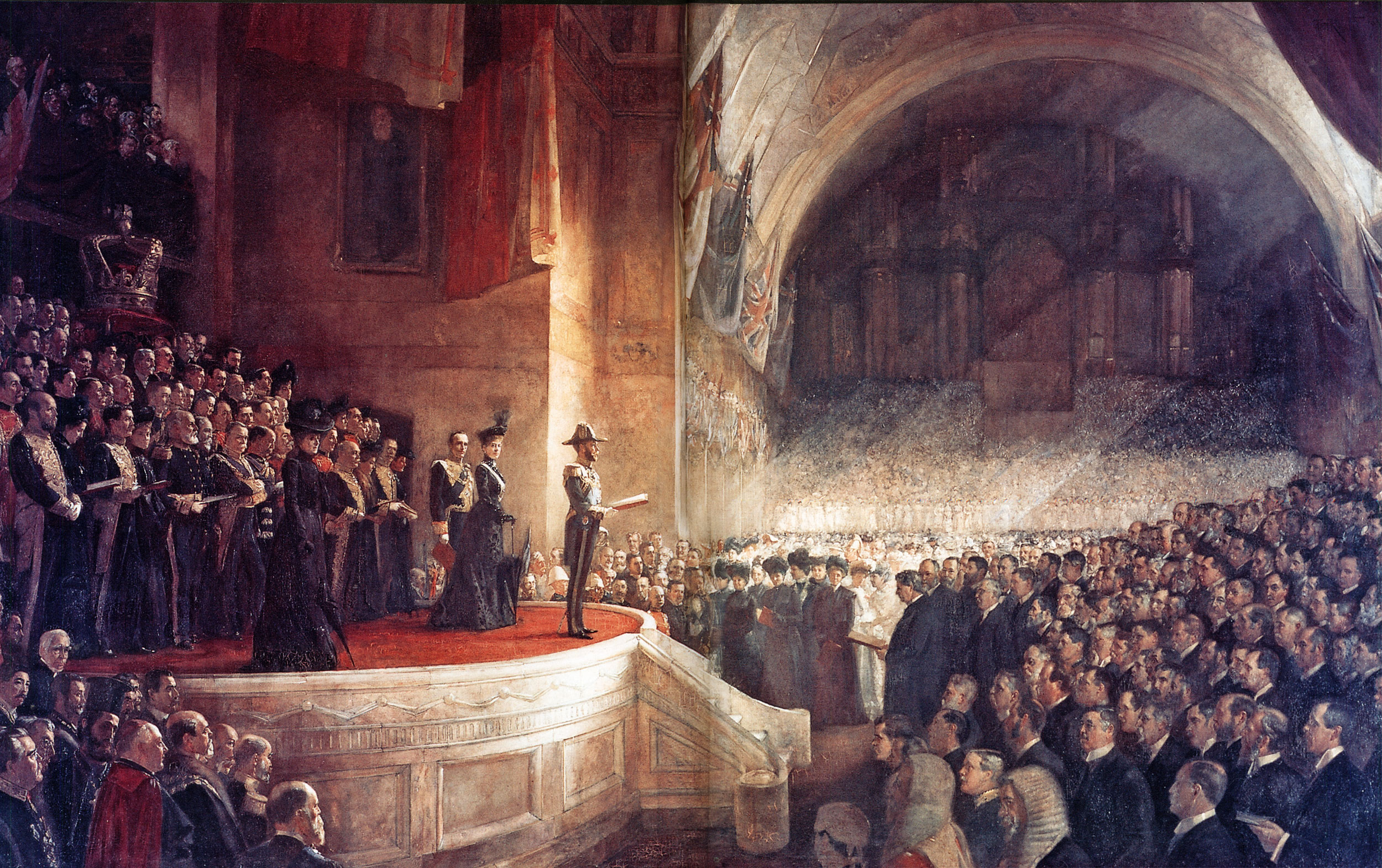
Be the first to comment on "2017 Symposium – Valdis Grinsteins"